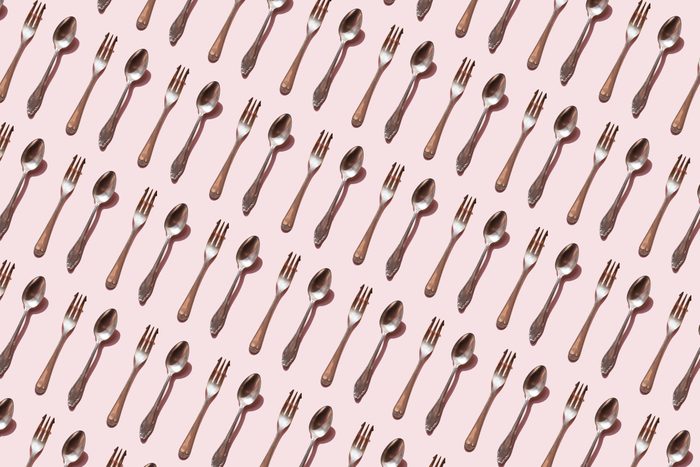
Foods that can cause anxiety
According to the Canadian Mental Health Association, 50 percent of the population will have or have had a mental illness by the time they reach the age or 40. What’s more, anxiety disorders affect 5 percent of Canadian households.
Medications, therapy, mindfulness, and exercise can all be good options for treating actual disorders or coping with everyday anxiety (and there’s plenty of coronavirus-related anxiety). However, there’s another remedy that’s closer to home: avoiding certain foods and beverages.
“We have all felt high or low after eating or drinking,” says Sharon Zarabi, RD, bariatric program director at Lenox Hill Hospital in New York City. “Behaviour and mood can be controlled by the ingredients we put in our bodies.” Stress can affect your eating but eating can also affect your stress levels.
Here are the foods that can cause anxiety.
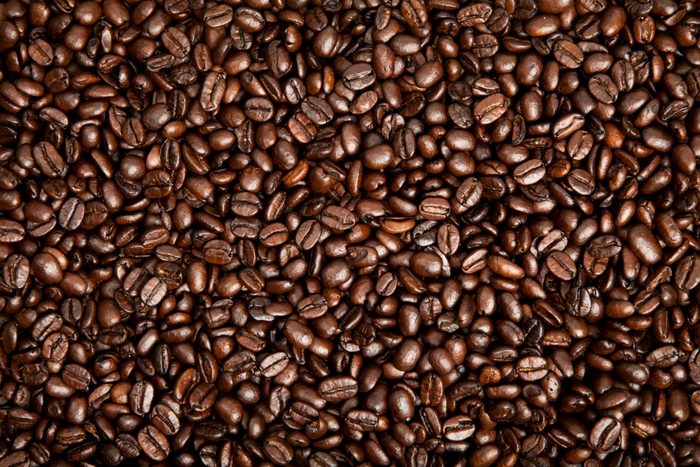
Coffee
The connection between coffee and anxiety may not seem that surprising, but it bears repeating, especially because so many other foods and drinks contain caffeine. You may be piling on this anxiety-provoking compound without realizing it, says Su-Nui Escobar, PhD, RDN, a national spokesperson for the Academy of Nutrition and Dietetics. You may be drinking “only” two cups of coffee a day but if you add an energy drink, some soda (even orange soda), and a slab of chocolate, your intake is sky-high.
Caffeine affects your body in much the same way as a scary event would—by churning out adrenaline, says Escobar. It can also release the stress hormone cortisol which spikes heart rate and blood pressure. Those hormones promote anxiety and also make it harder to sleep, which just worsens the anxiety. Some non-caffeinated but perky alternatives: herbal (not black) tea, decaf coffee, or sparkling water with a lime or fruit undertone. “That gives you the sensation of a bubbly drink with flavor and zero caffeine,” Escobar says.
(Related: What Happens to Your Body When You Drink Tea Every Day)
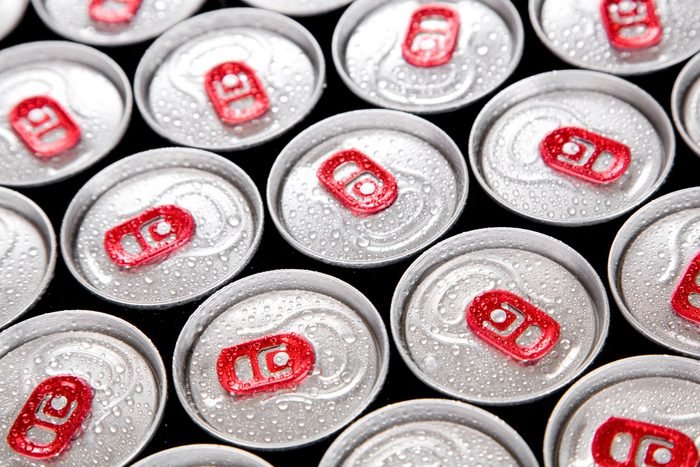
Energy drinks
Speaking of caffeine and energy drinks, these popular products can contain pure, concentrated caffeine. A two-ounce shot of five-hour energy, for instance, contains 200 milligrams of caffeine, about the same as a Starbucks Cold Brew. Published in the Journal of Caffeine Research, a 2016 review of studies looking at energy drinks noted that most of the research found associations between consuming energy drinks and symptoms of mental health problems such as anxiety, stress, and depression.
And energy drinks may do more than make you feel jittery. They’ve been linked with increased heart rate and blood pressure as well as changes in the electrical activity of the heart, even strokes and seizures, not to mention anxiety and even psychosis, according to the American College of Cardiology. While many of these effects may not cause serious health problems, the concerns did prompt the U.S. Food and Drug Administration (FDA) to issue a warning.
(Related: What Happens to Your Body When You Have an Energy Drink)
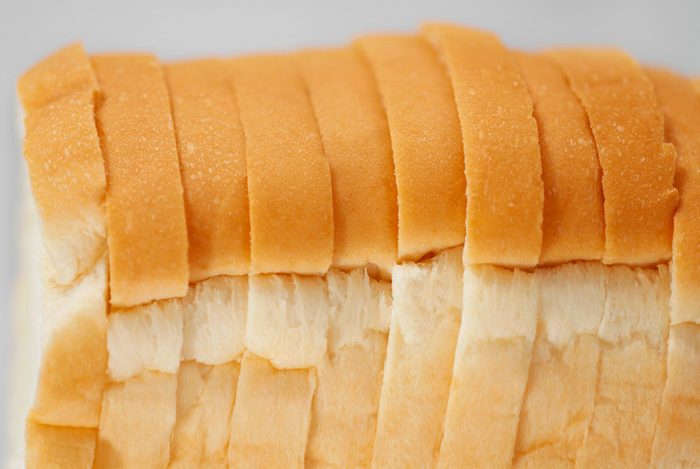
White bread
Or white rice or white pasta. All these items are processed and contain refined sugars which, in general, are a no-no for a healthy diet and can affect your mood. “The sugar spikes blood sugar followed by a quick drop-off of sugar which is associated with anxiety,” says Escobar. Sugar tickles the same pleasure centres as cocaine, an addictive stimulant drug, which may feel good for a moment but when you crash you won’t feel nearly as good.
Go for complex carbohydrates in whole grains like oats, brown rice, and sweet potatoes. Whole grains are one of the pillars of healthy eating plans, such as the Mediterranean diet and the DASH (Dietary Approaches to Stop Hypertension) diet.
(Related: 10 Sneaky Foods That Can Increase Your Blood Sugar)
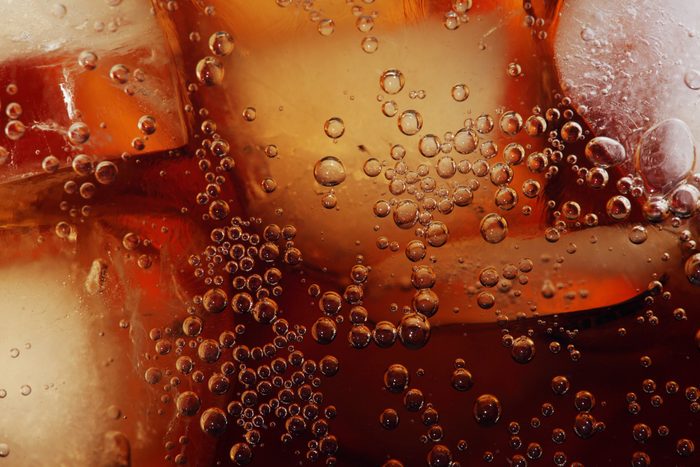
Regular soda
Sodas give you a double whammy of caffeine and sugar, hence why it’s one of the top foods to avoid if you have anxiety. Caffeine can leave you shaking while sugar, says Zarabi, “is like a drug and hijacks our brain. It elevates our mood at first but in the long term, it worsens our emotional well being, and causes inflammation and excess body fat.” According to the 2015-2020 Dietary Guidelines, close to half of the added sugars in Americans’ diets from beverages like soda and fruit drinks. And don’t necessarily reach for the diet soda as a substitute as that may cause depression.
(Related: 23 Flavoured Water Recipes That Are Beyond Refreshing)
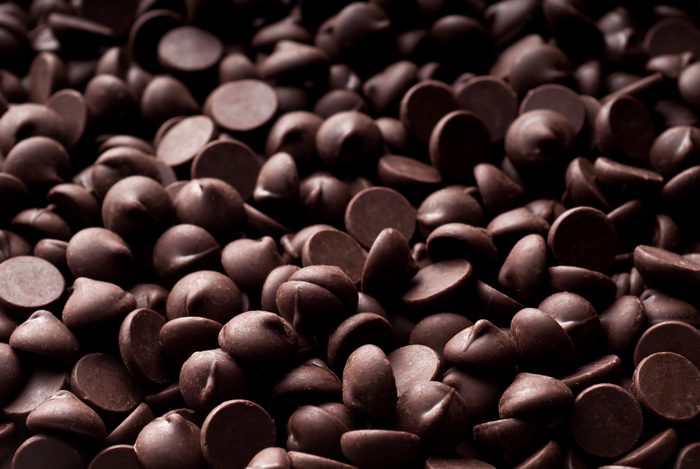
Chocolate
Oddly enough, though chocolate has been hailed as a stress buster (in moderation), it may also have a darker side because it, also, contains sugar and caffeine. When you have that drop off, you can get anxious, says Escobar.
“If you really want to have something sweet, pair it with protein and a little bit of fat,” says Escobar. Suggestions include Greek yogurt with a little sugar and blueberries or peanut butter and fruit. “This will give you physiological satisfaction that will prevent you from having cravings,” she explains. (Dark chocolate, btw, has fewer added sugars than light chocolate.)
(Related: This Is What Happens to Your Body When You Eat Chocolate)
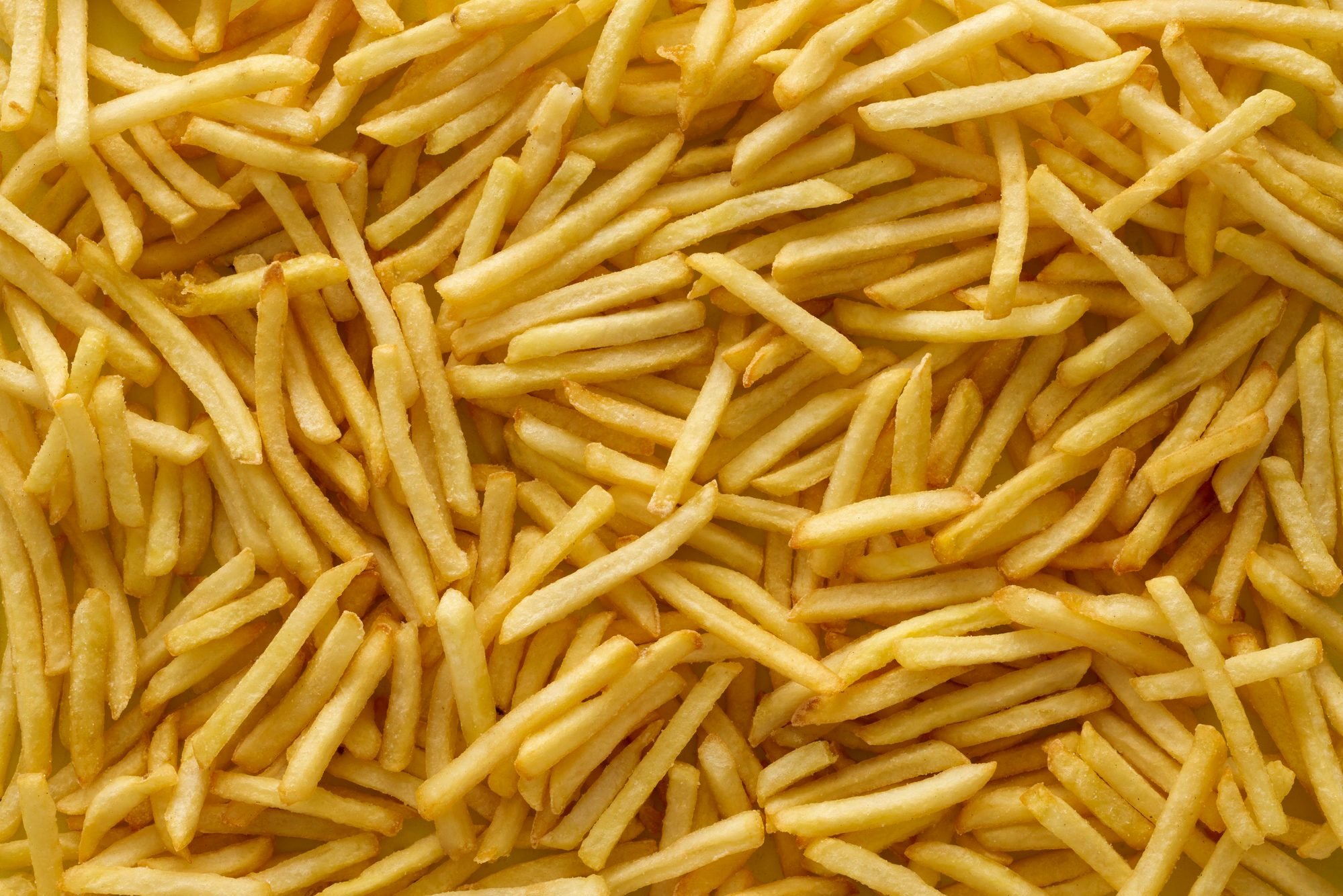
Fried foods
Fried foods (think French fries, fried chicken, fried onion rings, and doughnuts) may lead not just to anxiety, but also depression. And nearly half of people with depression also have anxiety, says the Anxiety and Depression Association of America.
And this should be anxiety-provoking: Fried foods are also linked with heart disease which is the number one killer of Americans. Many studies over the decades have confirmed the link, with a 2015 review study, published in the journal Nutrients, finding that eating fried foods four or more times a week is linked with a higher risk of type 2 diabetes, heart failure, obesity, and hypertension. Obesity, diabetes, and hypertension or high blood pressure are all major risk factors for heart disease. This is likely because foods are often fried in oils high in saturated fatty acids and partially hydrogenated oils, both of which can clog your arteries. Better choices are monounsaturated and polyunsaturated fat.
(Related: 9 Superfoods You Can Turn Into Scrumptious Comfort Food)
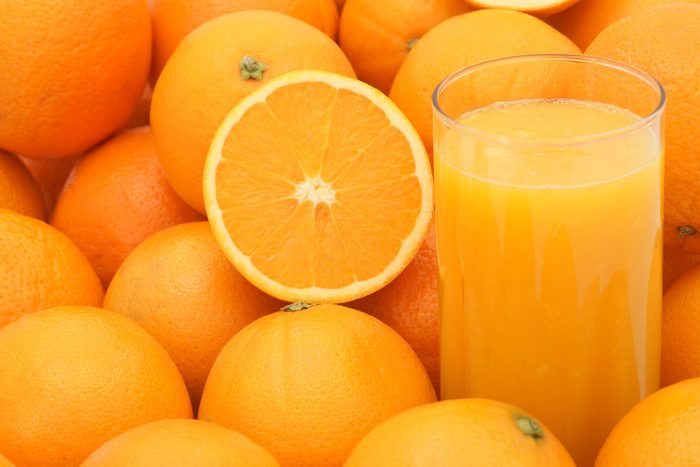
Fruit juice
Many of the fruit juices that you buy in the supermarket are 10 percent fruit and 90 percent sugar, points out Escobar. Things aren’t much better even if you squeeze the juice yourself, she says. Think about it: when you eat a piece of fruit, let’s say an orange, you only eat one or two at a time. Not only does it have less sugar than juice, but it’s also packed with fibre, which is digested more slowly, keeps your blood sugar stable, and makes you feel full longer. If you make fresh-squeezed juice, you’re going to need, easily, five or six oranges. That’s pretty much all sugar and no fibre, setting you up for a spike in blood sugar and the jitters.
The American Academy of Pediatrics recommends that children under one year don’t get fruit juice at all; that kids aged one to three have no more than three ounces a day; children four through six no more than four to six ounces daily; and a maximum of eight ounces for children seven years and older. Dried fruit, with such concentrated sugar, poses much the same problem.
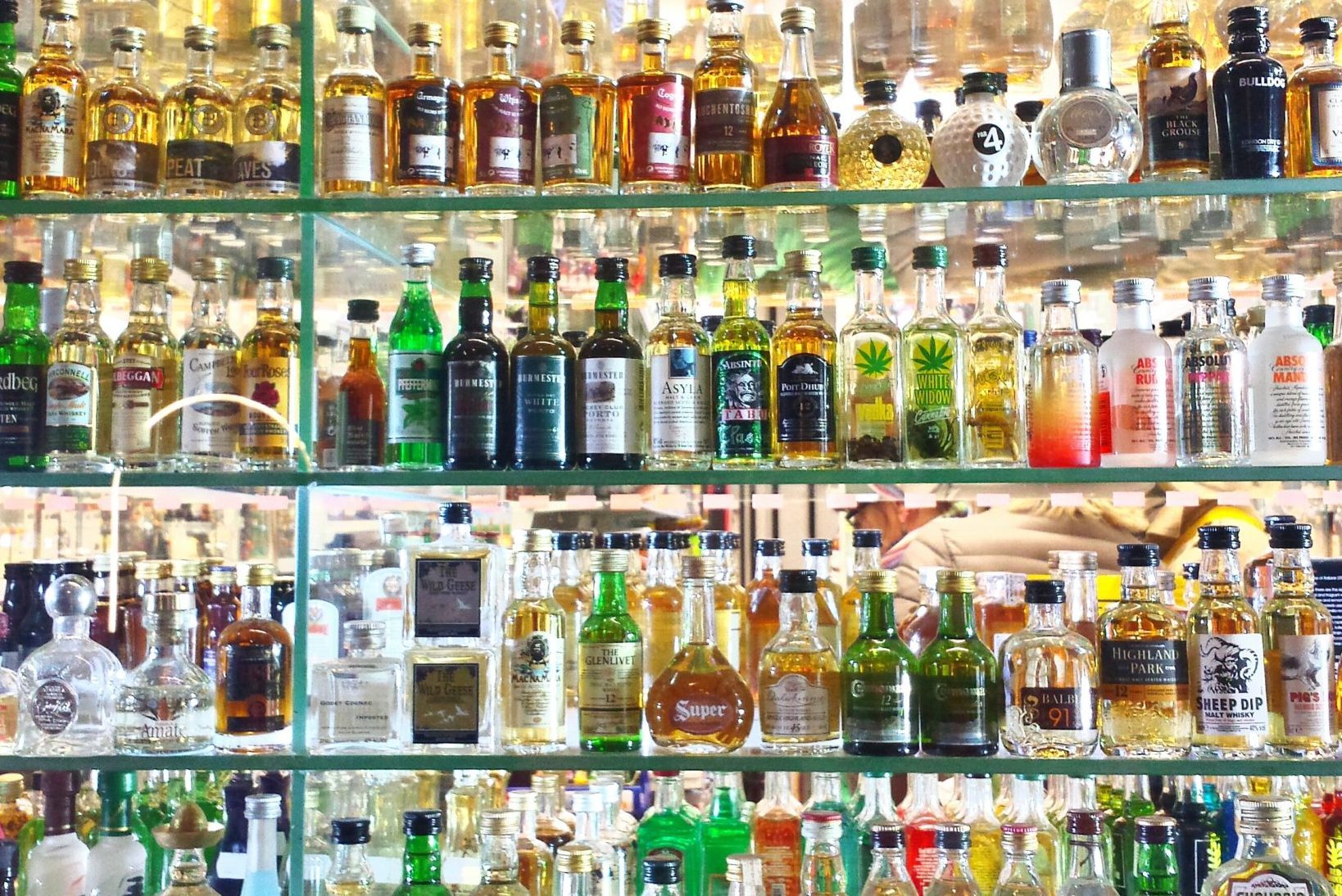
Alcohol
Drink too much alcohol and you may feel relaxed for a while, but it can backfire, causing you to lose sleep which is a sure recipe for anxiety, says Escobar. And not unlike ice cream and other high-sugar foods, alcohol leads to the highs and lows of blood sugar that lead to anxiety and depression. It can also result in dehydration, yet another reason you may feel edgy.
The updated Dietary Guidelines recommend that women have no more than one drink a day and men no more than two and only if you’re of legal age. What constitutes one drink? Usually 12 fluid ounces of regular beer containing five percent alcohol, five ounces of wine or 1.5 ounces of distilled spirits. If you do drink alcohol, you can minimize dehydration by drinking plenty of water.
(Related: Trying to Drink Less? These Tasty Mocktails Make it Easy)
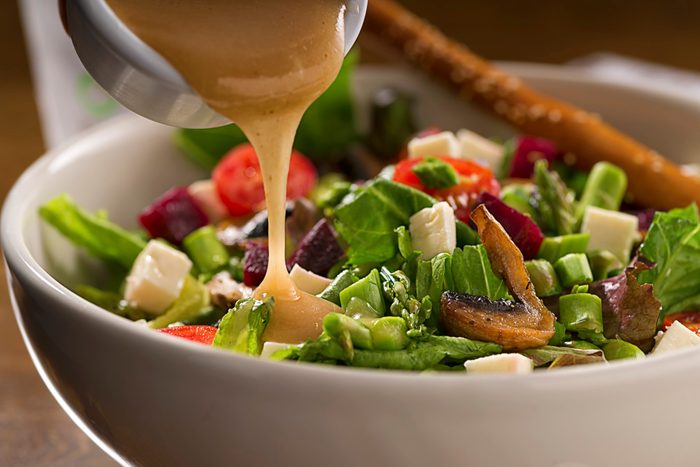
Light salad dressings
Many of these so-called “lite” products make up for reduced fat with high levels of hidden sugars, says Escobar, making them one of the foods you should avoid. Light salad dressings are a major culprit. When Harvard University researchers looked at one ready-made tomato basil sauce in the supermarket, they found that half a cup (less than most people would eat) contained three teaspoons of sugar. A cup and a half for dinner, which seems more realistic, would be nine teaspoons. Try our sugar-free Tahini-Lemon Dressing.
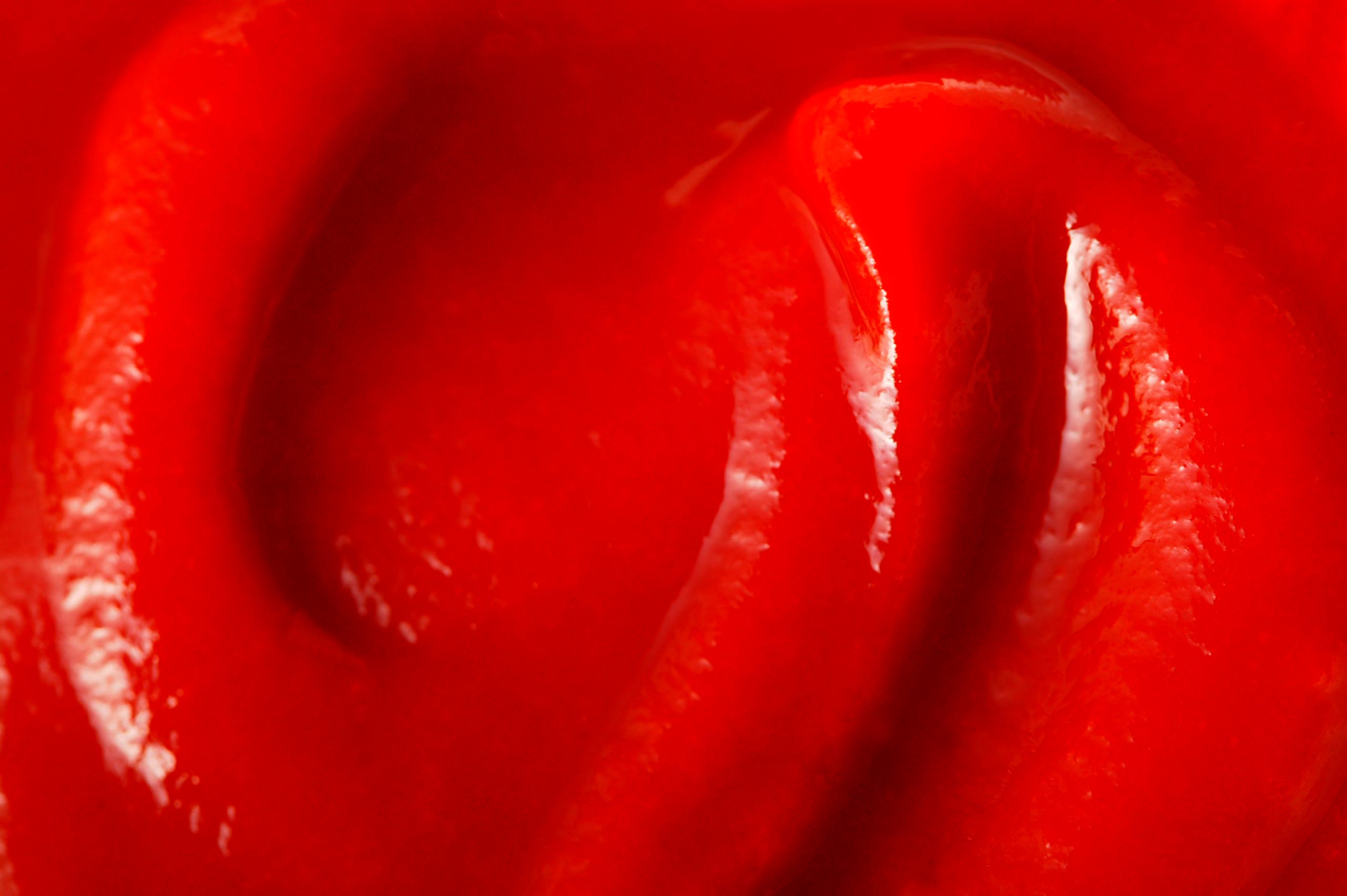
Ketchup
Ketchup may be the poster child for hidden sugar with one tablespoon containing 12 calories of added sugar, according to the most recent Dietary Guidelines. “Sugar is found in almost everything we eat,” says Zarabi. “Don’t be fooled to think that something needs to taste sweet to contain sugar, since sugar is concealed in the ingredient list with other forms of molasses, high fructose corn syrup, rice, syrup, brown syrup, invert sugar, granulated, table, and anything ending in -ose.” Even some over-the-counter painkillers are sugar-coated, says the National Library of Medicine.
“If you’re going to have a tablespoon of ketchup go ahead,” says Escobar. But if you’re going to dump half the bottle on your burger, reach for mustard, which typically doesn’t have any sugar.
(Related: 10 Things That Happen to Your Body When You Stop Eating Sugar)
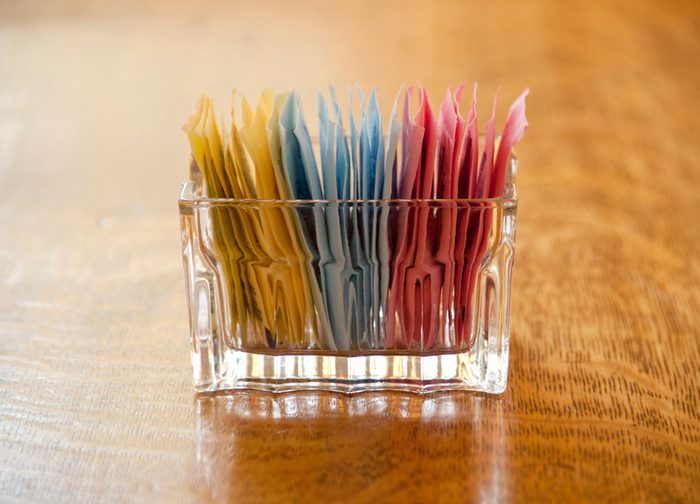
Artificial sweeteners
You would think that artificial sweeteners, which technically aren’t sugar and don’t add calories to your day, would eliminate the high-low trap of added sugar. In fact, no. These additives can cause the same crash you might experience with sugar or caffeine, along with feeling tired, changes in mood, trouble concentrating, and heart palpitations. Aspartame, one of several high-intensity sweeteners approved by the FDA, actually blocks the production of serotonin (the “feel-good” chemical) in the brain. A 2014 study in the journal PLOS One, found that both adding artificial sweeteners to coffee or tea was associated with a higher risk of depression than drinking them black.
Next, learn a 10-minute science-tested anxiety trick that really works.
